

Personalized Aikido Seminar in MarchIn Tenerife, Canary Islands.Led by: Sensei Ishana Pérez.Kyoshi Date: 7 and 8 March 2026. "Terrero de lucha del Calvario". Tenerife – Canary Islands, Spain.
The plans will have an upward progression, both in technical content, internal elements and challenges for the student. The courses will be aimed at small groups of students, with specific content to work on and limited to a specific time frame. It is a new approach within Aikido and, as far as we know, we have no evidence that it has been carried out to date. As the course will be structured by levels, those who start with the basic levels (5th and 4th Kyu) can continue to progress upwards to the higher levels (3rd and 2nd Kyu) throughout the year. Those at higher levels will undergo a process of refinement and perfection during the academic year. In this case, they must take into account that the technical approach will vary. This modification will depend on whether or not the objectives established after the first seminar are achieved. That is, if no achievements are established in the different planned contents, they would be repeated and, therefore, the initial approach would not change. It would be very helpful! If from one seminar to the next, participants had personal practice on the content taught. It is a unique opportunity, both for new instructors and for students who want to do an in-depth study of Waza individually. On the other hand, we continue to contribute to the world of Aikido forms and procedures to develop better Aikido and, as always, seeking excellence with good work.
Exchanges Kuubukan.
|
||
Day |
Time |
Activity |
Saturday 7th |
08:00 h |
|
" |
Hourly |
|
" |
Hourly |
|
" |
80:00 h to 13:00 h |
|
Sunday 8th |
Same as Saturday |
|
" |
14:00 h |
|
Material:
* Keikogui, Bokken y Jo.
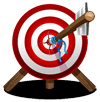 Objectives for the Seminar.
Objectives for the Seminar.
|
The central idea and the objective to achieve in these seminars is to offer practitioners individualized teaching based on our learning curriculum. ![]()
We will address this taking into account the technical aspect of each of the different levels that arise in planning.
The skills that must be cultivated at each training level, which are related to the content to be practiced and which are always aimed at facilitating the execution of the different techniques
Nor are we going to neglect the work on the internal aspects, which correspond to the development of the dynamics and the level that is being executed.
The general concepts As it could not be otherwise, our packaging is available at the click of a button on our website To be chosen according to the interest and concerns that each practitioner has, taking into account the technical approaches we offer.
|
Technical PlanningSaturday 7th
1st The 6 basic Kamaes. 2nd Shihogiri (working in 4 directions) and Hapogiri (working in 8 directions) with the Jo in Choku Tsuki and with Ken in Shomenuchi. 3rd Work on the movements What is the purpose of these elements? In the first case (the Kamaes), learn the basic guards with both weapons. In the second case (Shihogiri and Hapogiri), become aware of the use of space by moving in four or eight directions. The other aspect when doing it with Ken is the awareness of the center (reference point the space between the eyebrows) while cutting in Shomenuchi. When approaching with Jo, the awareness of the change of direction is developed by working on the gaze and adherence when changing the dominant hand of the Jo. First, we will do 4 directions, and with that base, we will then address the remaining 4. In this way, integration will be progressive for better assimilation. In the third case (displacements), it is about using the space in a practical way, having the correct angle when performing the different displacements.
I work on a line on the ground moving from one side to the other, either in Tsugi ashi This exercise will be performed both with the Jo, in Choku Tsuki working Hidari hanmi: What is the purpose of this element? Firstly, the aim is a flexible and precise foot movement when moving from one side of the ground line to the other, taking into account the left foot (exercise with Jo) and the right foot (exercise with Ken). In this way, both sides of the body will be taken into account. Secondly, this will be very useful later on to tackle any higher-level content: Suburis, Awase, etc.
What is the reason for using this type of energy? The reason for using this type of energy is that many technical details need to be integrated with each weapon, and if you are not physically and mentally present, it will be a waste of time; therefore, there will be no incorporation of knowledge about the body based on what is being executed. Learning elements when working at this level:
Suburis from 1 to 10 with Jo. Suburis from 1 to 7 with Ken. What is the purpose of these elements? Work on the Kamae, the displacements and learn the technique – movement of the Jo and the Ken.
Jodori and Taichidori. Jodori's 1st defense against grab and 1st counterattack defense (Choku Tsuki). 1st Taichidori with the Shomenuchi attack. What is the purpose of these elements? Firstly, with the Jo, the expansion of energy (Ateri) in the encounter (De - ai) through it, both in the gripping and attacking situation. Secondly, with the Ken, see the application of the mnemonic rule: “Aikido is Irimi – Atemi”. This is done by applying the Tsugi ashi
|
Technical PlanningSaturday 7th
I work in pairs, walking through the hallway. While walking, a contact exercise will be performed by opening and closing, while maintaining the correct Ma – ai, both with the Jo and the Ken. What is the purpose of this element? First, practice walking correctly while maintaining the correct mid-guard Secondly, learn to maintain contact within the dynamic. Thirdly, practice opening with the weapons without losing extension, that is, work on adhesion.
I work with Makiwara using the Tsuki attack, both with the Jo and the Ken. Having the reference of the correct Ma – ai as if working with a partner. Keep in mind that the distances are different with each weapon! Esto se hará con el desplazamiento de Tsugi ashi
What is the purpose of this element? In the work of each of the Awases, one must be aware that they have several movements, which must be connected to each other without intermittency appearing. This is also taken into account when one is finished and the next one has to be done in the order in which they are arranged. That's the reason for applying the energy to keep going. That's how you learn to connect the different steps and the different pieces that make up the exercise. Learning elements to practice at this level: What is the purpose of this element? That the actions with the Awases are linked within their technical cadence means that both Uke and Tori have to react within the action for which each one is responsible.
Awases from 1 to 3 with Jo. Awases from 1 to 3 with Ken. The Awases practice will have two phases: a) Do each Awase separately to understand its technical structure. b) Perform the three Awases in one go. First from the role of Tori, and then from the role of Uke. What is the purpose of these elements? First, learn the dynamics of the different Awases with their respective details. Secondly, work on focusing on the partner, that is, exercise Zanshin or the spirit of the gesture In all these phases, the mental presence of the practitioners must be constant, fluid, and flexible.
Jodori and Taichidori. 3 Jodori defense counter-attack and 3 defense counter-attack (Choku Tsuki). 3 Taichidori with the Shomenuchi attack. What is the purpose of these elements? Increase the number of empty-handed defenses within different contexts that are exposed. Also see different technical contexts within Tori's role
|
Technical PlanningSaturday 7th
Each student should assess whether they can access this level required at this time; if they do not have the appropriate ability or experience, it is better to choose a less demanding level and time. Why is that warning being issued? Because some things will be assumed to be known – the basics established in previous sessions. This is done to advance within the technical context while simultaneously raising the level of work.
Working in pairs, performing the Shomenuchi cut in the rider position (Kiba dachi What is the purpose of these elements? Firstly, strengthening of the legs by exercising in the rider's position. Secondly, I work with the central axis by swinging from side to side. Thirdly, awareness through the oscillation of body weight between one leg and the other, along with the contact of the 8 points of support with the ground (root). Fourth, work on synchronization between the Time, the oscillation and the cut.
Trabajo sobre la plataforma de equilibrios What is the purpose of this element? First, control over foot support. This exercise leads the student to confront their reality regarding the contact they establish with the ground, or in other words, what level of rootedness they possess. Secondly, practice and control your Tanden or center of gravity. Thirdly, it will provide the student with many proprioceptive resources
What is the purpose of this element? That the action of the Kumijo and the Kumitachis is very lively, that is basically being light and rooted at the same time in order to be able to respond to the action of the other. On the other hand, the body movement and technique at this point must be very free and precise, given that these are advanced elements within Aikijo and Aikiken. For these basic reasons, the spirit of vitality must bubble up within the practitioners in their technical action. Learning elements to practice at this level: What is the purpose of this element? Having reached this point and from here on, working from the Hara becomes essential to empower the practice of each student. Concentration in the lower abdomen Understanding the concept well is just as important as knowing how to develop it within the context of Keiko, but to provide some starting points with the aim of making things easier for the students attending the seminar, two things must be kept in mind: Working with your gaze. And contact with weapons from the very moment the encounter occurs (De – ai). Both aspects will be explained in person and in detail before starting this section.
Kumijo 1 and 2. Kumitachi 1 and 2. The practice of pre-arranged fights will have two phases: a) Make each Kumijo and each Kumitachi separately to understand their technical structure. b) Perform both Kumijo and both Kumitachi in one hit, first from the role of Tori, and then later from the role of Uke. What is the purpose of these elements? First, get started with Kumijo and Kumitachis. Secondly, to increase technical knowledge with both weapons by working at this level. Thirdly, to have greater physical dexterity, which will subsequently have an impact on other educational aspects of Aikido.
Jodori and Taichidori. 5 Jodori defense counter-attack and 5 defense counter-attack (Choku Tsuki). 5 Taichidori with the Shomenuchi attack.. What is the purpose of these elements? Expand technical responses to attacks with both weapons.
|
Technical PlanningSaturday 7th
At this point, it is very difficult, due to time constraints, to work on both weapons at the same time in the same session, as has been done in all previous plans. So, the plan for these last few hours will be as follows: today, Saturday, we will work on Kumijos, and the fourth hour on Sunday will be about Kumitachis. The vision in both cases is to use Kumijos and Kumitachis as a base, but at a certain moment in the execution, to make use of the body or the weapon A part of Kumijo
For Kumijo No. 1. In the final phase, from the Tori's role, position yourself correctly so that later, in the technical phase, you can apply the body movement with the empty-hand technique that will be executed (it will be Kotegaeshi). Within the Kumijo form, priority will be given to displacement – positioning in the last phase of the movement, before applying the technique. For Kumijo No. 2. Yokomenuchi exercise with attack at Gedan level (lower body), -Uke work-. Tori defends and strikes the Uke's Jo. What is the purpose of these elements? Facilitate the subsequent technical execution in the variation that occurs within the Kumijos and Kumitachis.
Exercise with Makiwara percussion in the way it will be applied in Kumijo. What is the purpose of this element? First, the correct body positioning to perform the extension cut. Secondly, awareness of the legs when attacking the partner's Jo with the whole body + the weapon.
What is the purpose of this element? That the action-reaction between the Uke and the Tori during the Kumijos dynamics be well understood. Learning element to practice at this level: What is the purpose of this element? That there be a harmonious movement (Kimusubi) between the technique, the action with the weapons and the execution between the two students.
1st Kumijo of Kihon. Based on this Kumijo, we apply the 1st body movement by executing an empty-hand technique. 2nd Kumijo of Kihon. Based on this Kumijo, we finished by attacking the partner Jo with our own. What is the purpose of these elements? Clearly distinguish the part that belongs to Kihon and where the body or Jo is used for the completion of Kumijo as a variant.
|
Suggestion!
It would be advisable to click on the blue links ![]() that accompany the description of the contents - objectives of the planning to have a broader and more complete understanding of the plan that we are going to carry out, because each link informs - expands the concepts to be worked on.
that accompany the description of the contents - objectives of the planning to have a broader and more complete understanding of the plan that we are going to carry out, because each link informs - expands the concepts to be worked on.
Technical PlanningSunday 8th
1st Shihogiri (working in 4 directions) and Hapogiri (working in 8 directions). With Jo (in Shomenuchi) and with Ken (in Yokomenuchi). 2nd Basic Ukemis with the Jo and with the Ken. First, the Ukemis will be done solo, then they will be done in pairs with the goal of feeling the projection of the partner and acquiring fluidity in the rolling action and that the weapon is not a hindrance, that is, that the student already has it integrated into the rolling action. What is the purpose of these elements? In the first case (Shihogiri and Hapogiri), do a superior job by changing the attack when performing these two exercises using the displacement lines on the ground. In the second case (the Ukemis), learn the body movement with the Ukemis while having the weapon with you. This will give the student confidence and improve their rolling technique. Remember that both hands are occupied holding the weapons! So we must use our bodies properly to avoid self-harm.
I work with implements: You will have the correct Ma-ai reference point as if you were working with a partner. Keep in mind that the distances are different for each weapon! This will be done with the displacements of Tsugi ashi What is the purpose of these elements? First, learn to use both types of movements in a practical way and have the correct distance to be able to cut on the Makiwara comfortably and while being centered and rooted. Secondly, learn to cut
What is the purpose of this element? With both hands occupied with weapons, it becomes "easier" to focus attention on the use of supports Learning element to practice at this level: What is the purpose of this element? Becoming aware of the foundation of the Kamae, which will then allow a good boost in the different movements – actions within any technical situation.
Suburis from the 11th to the 20th with Jo. Attitude work with Ken. 1st Practice among 4, three Ukes and one Tori: basic movement related to the Iriminage technique. 2nd Practice in pairs, basic movement related to the Iriminage technique with double attack by the Uke, who will do it in Shomenuchi. What is the purpose of these elements? In the case of Jo, complete the missing Suburis within its technical base. In the case of Ken, the first thing is to learn how to close the Tori with three Ukes so that he cannot escape, that is, to know how to use the space to the benefit of the Ukes. The shape to consider for this is the triangle. It will be explained in detail in person when we cover this section. The second thing is to generate the attitude and body ease taking into account the Iriminage technique within the context of the saber.
Jodori and Taichidori. 2 Jodori counter-attack defense and 2 counter-attack defense (Choku Tsuki). 2 Taichidori with the Shomenuchi attack. What is the purpose of these elements? First, a review of the Jodori and Taichidori that was seen on Saturday, while adding a new one, because the work is cumulative as we progress through the content. Secondly, we accumulate knowledge and body memory through weapons as we add new content.
|
Technical PlanningSunday 8th
I work in pairs walking through a hallway: With the Jo, Uke attacks with Choku Tsuki, Tori responds also with Choku Tsuki by retreating – moving away and attacking Uke's side. With the Ken, Uke attacks in Shomenuchi. Tori also responds with Shomenuchi, cutting the Kote (wrists) of the partner by retreating, once on the front hand and the next time on the rear hand of Uke. This means that he moves from one side of the Uke's attack line to the other. What is the purpose of this element? Firstly, backward movement increases the difficulty of the work and the coordination of the action, but it will greatly improve footwork. Secondly, work on the synchronization of movement between the Uke and the Tori. Thirdly, on the part of the Tori, practice precision – control of the cut over the partner's wrists.
I work with Makiwara using 2 attacks, both with the Jo and the Ken. The attacks are Tsuki (in the case of Ken, performed by both sides) and Shomenuchi. What is the purpose of these elements? First, learn to chain two attacks together without any interruption between them. Secondly, gain body ease when chaining the two attacks together. Thirdly, learn to execute both attacks, that is, poking and cutting forcefully on the Makiwara. This will give the student a realistic understanding of these attacks.
What is the purpose of this element? We continue with the same energy as on Saturday, because new Awases are being incorporated and we have to apply it to these new exercises to integrate their content. Learning element to practice at this level: What is the purpose of this element? The aim is to avoid overworking the upper body,
Awases from 4 to 8 with Jo. Awases from 4 to 7 with Ken. The Awases practice will have two phases: a) Do each Awase separately to understand its technical structure. b) Perform the three Awases in one go, first from the role of Tori, and then later from the role of Uke. What is the purpose of these elements? This last phase of the Awases is the most advanced within this section, so a lot of attention will be paid to Time, adherence, continuity, action-reaction, etc. All these aspects are key to having a flexible and fluid body movement – technique within the technical framework of this practice among partners.
Jodori and Taichidori. 4 Jodori defense counter-attack and 4 defense counter-attack (Choku Tsuki). 4 Taichidori with the Shomenuchi attack. What is the purpose of these elements? With this load of content, -8 techniques with both weapons-, it tests not only the student's body memory and technique, but also the check of their resources with cognitive abilities. If we want to prioritize one of these resources, it would be memory within its broad range.
|
Technical PlanningSunday 8th
Both the exercises and the work with the equipment will be more difficult, with the goal of encouraging students to reach a higher level in their practice.
Standing on the balls of the feet, make cuts (Shomenuchi) by flexing and stretching the legs while maintaining balance on the tips of the toes, while positioning the body at different heights when cutting (up and down). It will be done in two ways: The first one, on the same tatami to initially have a clear reference on the exercise in question. The second exercise will be done by placing the toes on a step to increase the difficulty and body control due to the vacuum created on most of the soles of the feet. What is the purpose of this element? First, strengthening the legs. Secondly, I work on structural equilibrium. Thirdly, the extension of the cut has the added difficulty of maintaining balance on the metatarsals. Fourth, the awareness of the Tandem – axis through the action of going down and up. Fifth, the synchronization between breathing, going down, going up, and cutting. Sixth, let go – relax your shoulders despite the pressure the exercise will exert on your body – quite a challenge!
We continue working on the balance platform, What is the purpose of this element? First, avoid straining the shoulder, chest, back, and arm areas. Secondly, to increase our awareness in the lower abdomen. Third, do not neglect the extent of the Shomenuchi cut while on the balance board.
What is the purpose of this element? The first thing is to cultivate the appropriate muscle tone in the different parts of the body involved in the action being performed. Secondly, work with a low Kamae to facilitate the anchoring of the posture. It must be remembered that with the Jo and with the Ken, the width of the feet of the Kamae is different! Learning element to practice at this level: What is the purpose of this element? Within the action of Kumijo and Kumitachi, feel light, agile, and connected to the ground in every action that occurs.
Kumijo 3 and 4. Kumitachi 3 and 4. The practice of pre-arranged fights will have two phases: a) Make each Kumijo and each Kumitachi separately to understand their technical structure. b) Perform both Kumijo and both Kumitachi in one hit, first from the role of Tori, and then later from the role of Uke. What is the purpose of these elements? Increase technique – resources with both weapons, as well as the physical development of the students. Because as the Kumijo and Kumitachi progress, the circumstances that arise, such as the technical skills, become increasingly complex, therefore, the demands also increase.
Jodori and Taichidori. 6 Jodori defense counter-attack and 6 defense counter-attack (Choku Tsuki). 6 Taichidori with the Shomenuchi attack. What is the purpose of these elements? Continue increasing technical knowledge when defending oneself unarmed against weapons attacks.
|
Technical PlanningSunday 8th
Let us remember that a part of the Kumitachi
Learn to cut (crotch and wrists) from Gedan to Chudan, that is, from bottom to top. It will be done in pairs and with contact sabers (provided by the seminar organizers) to get a better feel for the cut so that there are no accidents and also to check that the attack of the Tori is reached or deterred. What is the purpose of this element? Learn to cut the groin or wrist. This aspect is key in the Uke's first action when facing the 1st Kumitachi.
Exercise with Makiwara performing Taren uchi in Kiba dachi (rider stance), in blocks of 50 uninterrupted cuts. This will have 2 phases: The first one, with the rider's posture low (maintaining the same height) and performing the 50 cuts. The second one, going up – inhaling and going down – cutting – exhaling until reaching the rider's position, and so on until completing the second 50 cuts. What is the purpose of this element? First, strengthen your legs, then move lightly in the Kumitachi work. Secondly, obtain – experience the sensation of cutting, both while standing still and while lowering – exhaling.
What is the purpose of this element? That the center of gravity (Tanden) is well positioned, that is, that at no time is the buttocks brought back in the different actions of the Kumitachi. Learning element to practice at this level: What is the purpose of this element? Firstly, that there is always a good Kamae within the work of the Ken. Secondly, the front knee should always be level with the big toe of the front foot. Third, make a clear distinction in body weight between the two legs.
Kumitachi No. 1 by Kihon. 1st Movement of the saber to control the partner. 1st Body movement to project the partner. 2nd movement of the saber to control the partner. 2nd Body movement to project the partner. If you want to advance – to make MORE and BETTER use of this hour of work, in the following video you have Kumitachi nº 1 executed in a basic way, with the Uke cutting the wrist.
If you practice on it for a month beforehand, you will be able to do a superior job with the movement of the saber and the body. Absolutely! This is a choice for the student who is fully committed and wants to progress in their studies, while also wanting to make the most of their investment in the seminar. What is the purpose of these elements? First, learn Kumitachi number one. Secondly, see the difference between using the body and using Ken to control – project the partner. Thirdly, to EXPERIMENTALLY APPREHEND what
|
Suggestion!
It would be advisable to click on the blue links that accompany the description of the contents - objectives of the planning to have a broader and more complete understanding of the plan that we are going to carry out, because each link informs - expands the concepts to be worked on.
Do you want to improve your performance in the seminar? Secondly, work more on internal aspects, for example, the gaze, Musubi, Sen no Sen, etc. So, for those interested in doing some preliminary work as personal practice
For those registered for the seminar (this includes those who have reserved a place in advance) you have our
|
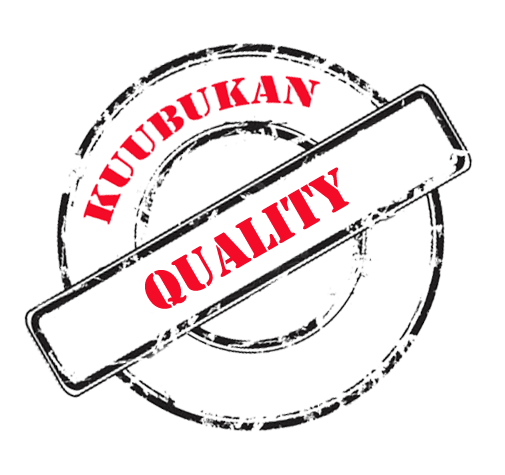 * Breakfast and Snack Kuubukan quality.
* Breakfast and Snack Kuubukan quality.
Courtesy of our Dojo and between classes you can take.
 |
cafe. |
 |
Tea. |
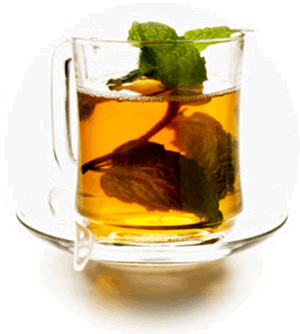 |
Infusions. |
 |
Fruit juice. |
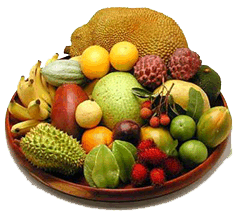 |
Fruit. |
 |
Sweet pastries. |
| After school as an appetizer: | |
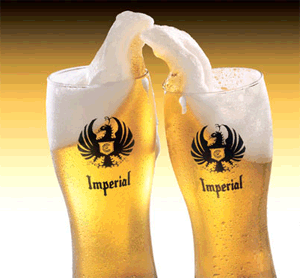 |
Beer. |
 |
Refreshments. |
 |
Appetizer of our Kuubukan Kitchen. |
 Contribution to the Aikido Seminar per Person.
Contribution to the Aikido Seminar per Person.
1 single day of seminar and doing 1 single hour per day |
€40 per person |
2 days of seminar and doing 2 hours (1 each day) |
€60 per person |
 Contribution to the Aikido Seminar for Groups.
Contribution to the Aikido Seminar for Groups.
 If 4 people come in a group they only make their contribution 3.
If 4 people come in a group they only make their contribution 3.
The amounts are as follows:
1 single day of seminar and doing 1 single hour per day |
€120 for the 4 |
2 days of seminar and doing 2 hours (1 each day) |
€180 for the 4 |
![]() Students in a group have to attend at a specific time, that is, of the 4 participants, they CANNOT enroll in different hours-levels.
Students in a group have to attend at a specific time, that is, of the 4 participants, they CANNOT enroll in different hours-levels.
 Last day to apply for the seminar: 28nd. February 2026.
Last day to apply for the seminar: 28nd. February 2026.
 To facilitate the work of the organization, you can modify the reservation or cancel it at the latest on the deadline to register (28nd. February 2026), after that period can not make any change or cancellation, therefore, will not be returned no amount.
To facilitate the work of the organization, you can modify the reservation or cancel it at the latest on the deadline to register (28nd. February 2026), after that period can not make any change or cancellation, therefore, will not be returned no amount.
 If any amount is returned, the transfer expenses are borne by the person who has canceled the place (s) to attend the Aikido Seminar.
If any amount is returned, the transfer expenses are borne by the person who has canceled the place (s) to attend the Aikido Seminar.
* Venue, contact the organization regarding payment.
 Whatsapp + 34 639 187 140
Whatsapp + 34 639 187 140
 e-mail: secretariadeldojo@yahoo.es
e-mail: secretariadeldojo@yahoo.es
 By attending our seminar is understood to authorize us to post pictures and videos on our website and social networks.
By attending our seminar is understood to authorize us to post pictures and videos on our website and social networks.
If you come accompanied the seminar and your partner does not practice, this section of our Web-Tourism Adventure- you can find plenty to do.
|
Aparthotel La Quinta Park is located in the municipality of Santa Ursula: |
 |
It is 10m. by car from the Dojo, it has easy communication since everything is a highway; It is a place with good views, pleasant climate and tranquility to recover from the effort of the seminar. Its surroundings offer many possibilities, both gastronomic and entertainment, according to the taste of each. To contact Aparthotel La Quinta Park. |
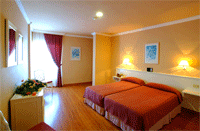 |
 |
 |

 In the previous series of seminars (2024-2025), -which were about the empty hand-, we now present a new approach, which will be carried out on weapons with the principles of Aikido (
In the previous series of seminars (2024-2025), -which were about the empty hand-, we now present a new approach, which will be carried out on weapons with the principles of Aikido ( This is the 2nd of the 4 plans we have (from 2024 to 2028) to approach Aikido seminars in a creative and instructive way.
This is the 2nd of the 4 plans we have (from 2024 to 2028) to approach Aikido seminars in a creative and instructive way. If you would like to see the evaluation of the seminar model you are planning, click here.
If you would like to see the evaluation of the seminar model you are planning, click here.
 Accommodation Recommended by the Organization.
Accommodation Recommended by the Organization.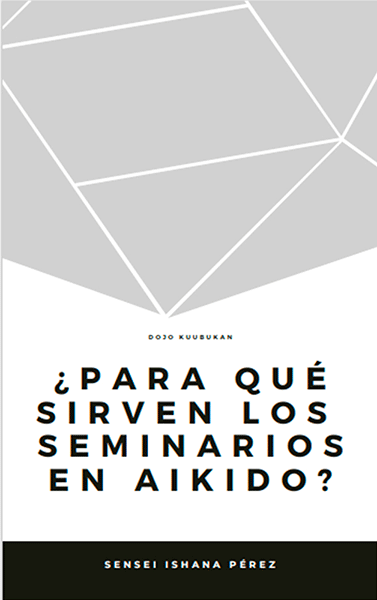 What are Aikido seminars for?
What are Aikido seminars for?
 Arrival, Etiquette, hygiene and cleaning for Aikido
Arrival, Etiquette, hygiene and cleaning for Aikido WARM-UP, free for attendees
WARM-UP, free for attendees Brief INTRODUCTION and answer some questions that the participants may have
Brief INTRODUCTION and answer some questions that the participants may have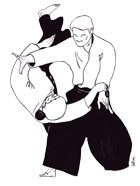 EMPTY HAND in blocks of 1 hour
EMPTY HAND in blocks of 1 hour Party at the Dojo
Party at the Dojo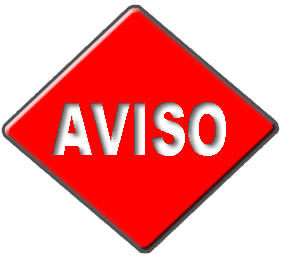

 Important Note!
Important Note!